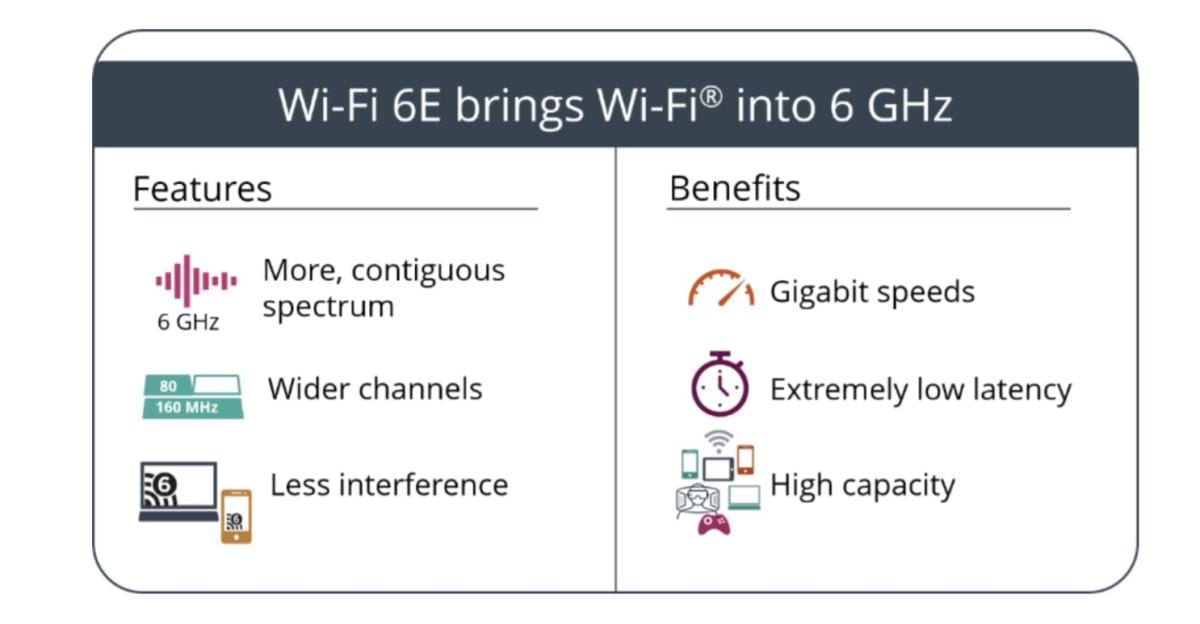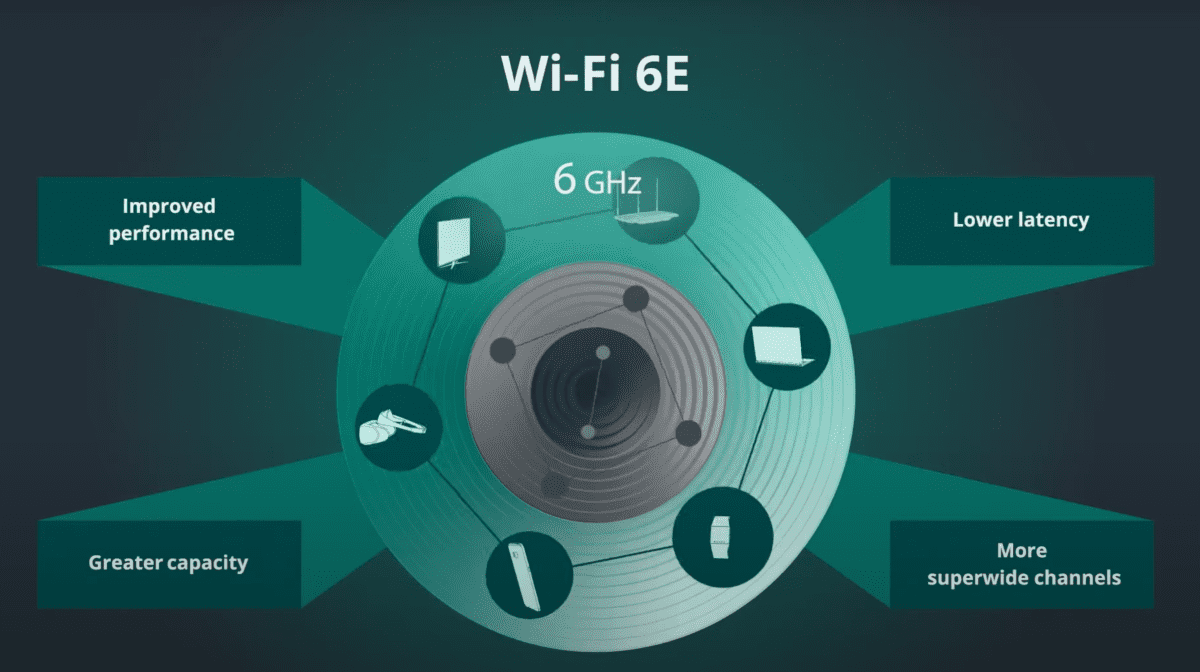North Carolina School District deploys WiFi 6 from Cambium Networks; WiFi 6 vs 6E Explained
Cambium Networks a leading global provider of wireless networking solutions, today announced its multi-year agreement with the school district of Burke County, N.C., with the addition of Wi-Fi 6 access points to provide multi-gigabit speeds in classrooms.
Using E-Rate funding for education, Burke County will upgrade its network to the latest Wi-Fi 6 technology to improve learning for students. The project, which began in late 2020, is delivering 1,500 multi-gigabit high-density access points to the district’s 27 schools and 12,000 students. This will allow students to simultaneously use Zoom and view streaming videos in the classroom using the latest XV3-8 access points, as well as XMS cloud management that seamlessly integrates with Google G-Suite and other embedded education systems.
“When the technology works, the students win, and so does our community. That is especially important as we navigate the pandemic and students return in March,” said Dr. Melanie Honeycutt, CIO of the Burke County School District. “Cambium is our solution for great performance at an affordable price for high density classrooms, and just in time as COVID accelerated our 1:1 laptop program and the increased use of streaming video.”
Cambium’s Wi-Fi 6 and XMS end-to-end cloud-management solutions provide multi-gigabit Wi-Fi access at a proven low total cost of ownership. With easy integration to existing systems, planning, provisioning, installation and centralized cloud management, Cambium’s solutions can be rapidly deployed to deliver end-to-end multi-gigabit wireless speeds.
“We love to work with visionary and discerning customers,” said Atul Bhatnagar, president and CEO, Cambium Networks. “Dr. Honeycutt and Burke County understand that this is the time to address the digital divide. They have done so in a way that gives students what they require for excellence in education.”
……………………………………………………………………………………..
What is WiFi 6 and 6E?
The IEEE 802.11ax standard was dubbed Wi-Fi 6 by the WiFi Alliance. At the time of publication, it was limited by U.S. law to a wireless spectrum that only covered the 2.4GHz and 5GHz bands.
In a 2.4GHz band, there are three non-overlapping channels—and that bandwidth is shared by all users. If too many end point WiFi devices compete for bandwidth on the same wireless channel, then some of those signals will be dropped.
In April of 2020, the Federal Communications Commission (FCC) voted unanimously to open up the 6GHz band for unlicensed use. With that policy change, significantly more airwaves are open that WiFi routers can use. The WiFi Alliance named versions of IEEE 802.11ax that operate at or above 6GHZ as WiFi 6E.
Images Courtesy of WiFi Alliance
…………………………………………………………………………………….
The opening of the 6GHz band is essentially quadruples the amount of airwaves (14 additional 80MHz channels, and seven additional 160MHz channels) available for WiFi routers and smart WiFi devices. That means less signal interference.
Wi-Fi Alliance® is introducing new terminology to distinguish forthcoming Wi-Fi 6 devices that are capable of 6 GHz operation, an important portion of unlicensed spectrum that may soon be made available by regulators around the world. Wi-Fi 6E brings a common industry name for Wi-Fi® users to identify devices that will offer the features and capabilities of Wi-Fi 6 – including higher performance, lower latency, and faster data rates – extended into the 6 GHz band. Wi-Fi 6E devices are expected to become available quickly following 6 GHz regulatory approvals, utilizing this additional spectrum capacity to deliver continuous Wi-Fi innovation and valuable contributions to consumers, businesses and economies.
So, what’s the difference?
Early-adopter devices using Wi-Fi 6 (such as the first batch of Wi-Fi 6 routers) are limited to the 2.4GHz and 5GHz spectrum, while Wi-Fi 6E-compliant devices will have access to all those much richer 6GHz airwaves.
References:
https://www.wi-fi.org/news-events/newsroom/wi-fi-certified-6-delivers-new-wi-fi-era
https://www.wi-fi.org/news-events/newsroom/wi-fi-alliance-brings-wi-fi-6-into-6-ghz
One thought on “North Carolina School District deploys WiFi 6 from Cambium Networks; WiFi 6 vs 6E Explained”
Comments are closed.





Good overview, Alan. In conjunction with the WCA, Viodi had subject matter experts discuss WiFi6e last year.
https://www.viodi.tv/2020/04/11/to-shared-spectrum-and-beyond/
Beyond traditional in-house WiFi routers, it will be interesting to see how the outdoor applications develop. In a sense, the outdoor applications will be similar to CBRS in that an Automatic Frequency Coordination database to ensure sharing of WiFi6e with incumbent uses.
The FCC issued a Notice for Further Rulemaking on client-to-client WiFi6e devices on January 11th, 2021 (with final comments due 60 days after that date).
https://docs.fcc.gov/public/attachments/DA-21-7A1.pdf
Client-to-client could open up some interesting applications. One that is often discussed is as a low-latency, high-speed wire replacement (e.g. an HDMI cable replacement). This point-to-multipoint application from a 6/20/20 WBA filing is especially interesting:
“These can include a teacher in a classroom sharing a high resolution and interactive video clip with students to aid with a lesson. The teacher could wireless-cast to all the students in the classroom despite clutter from desks and books. Any stylus markings on content would also benefit from high bandwidth and low latency and replicate on connected displays without delay. ”
https://ecfsapi.fcc.gov/file/10628205821118/WBA%20PWG%20-%206%20GHz%20FNPRM%20Response%20-%20Final%2020200624.pdf